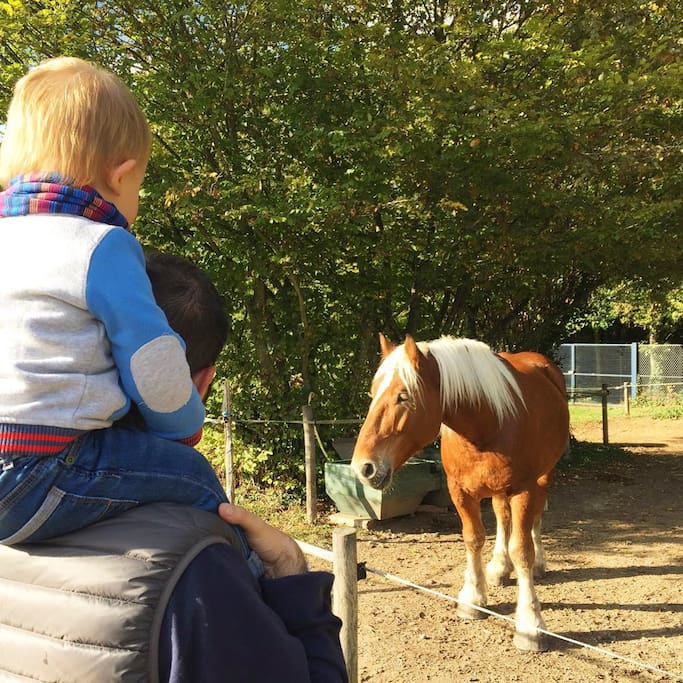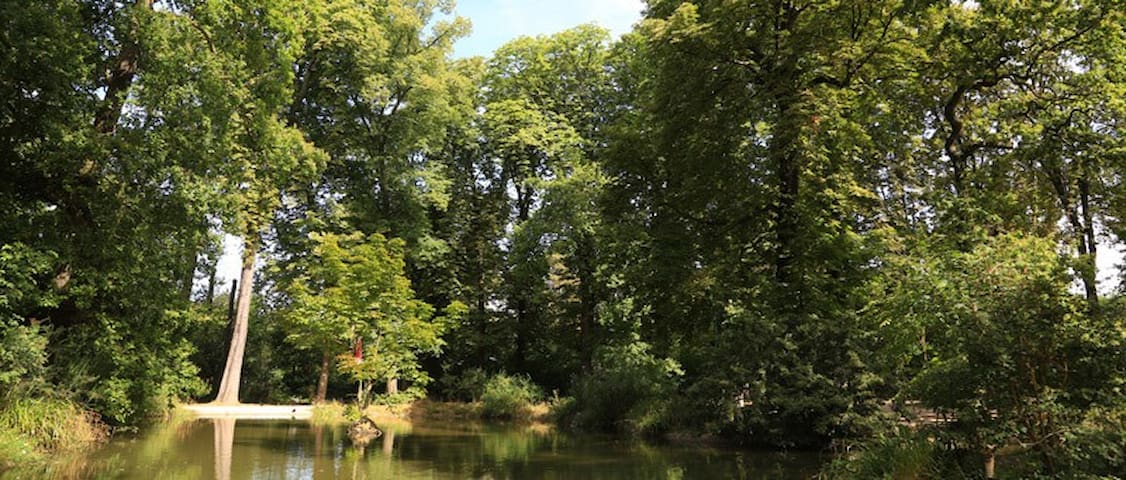Sorties Enfants & nature
Farm Paris
1 Rte du PesageFarm for Children, closed to our house (<2 km)…
Bois de Vincennes : With an area of 9.95 km2, the Bois de Vincennes is the largest green space in Paris, slightly larger than its counterpart in western Paris, the Bois de Boulogne (8.46 km2). In fact, it accounts for nearly 10% of the total area of the municipality of Paris and is almost as large as all the arrondissements of the center of the capital (from 1st to 6th). By comparison, Central Park in New York is only 3.41 km2, Richmond Park, London's largest park, 9.55 km2, and Griffith Park, the world's largest municipal park in Los Angeles, 17 km2. The Bois de Vincennes remains significantly smaller than the large forests of the Paris region, especially since only 500 hectares are really wooded.
1135 Einheimische empfehlen
Bois de Vincennes
Route de la PyramideBois de Vincennes : With an area of 9.95 km2, the Bois de Vincennes is the largest green space in Paris, slightly larger than its counterpart in western Paris, the Bois de Boulogne (8.46 km2). In fact, it accounts for nearly 10% of the total area of the municipality of Paris and is almost as large as all the arrondissements of the center of the capital (from 1st to 6th). By comparison, Central Park in New York is only 3.41 km2, Richmond Park, London's largest park, 9.55 km2, and Griffith Park, the world's largest municipal park in Los Angeles, 17 km2. The Bois de Vincennes remains significantly smaller than the large forests of the Paris region, especially since only 500 hectares are really wooded.
Lieux emblématiques
On September 7, 18793, the inauguration in Vincennes of the Gravelle plateau racecourse, the first racetrack for trotters in the Paris region4 took place. A lease is granted to the Société d'encouragement pour l'amélioration du cheval français de demi-blood by the municipality4. At the time, trotting and galloping.
Very damaged by the fighting of the Franco-Prussian War of 1870-1871, the Vincennes racecourse underwent many renovations in 1879.
The first winter meeting in Vincennes was created in 1906. The objective is then to increase the number of trotting meetings. The number of race days will continue to increase, from 10 in 1905 to 38 in 1910 and 68 in 1925.
The queen event of the racetrack program was born in 1920: the Prix d'Amérique. As the trot was a great success, obstacle courses disappeared from the program in 1934.
On June 20, 1952, the first night races took place, on the initiative of René Ballière. A race now bears his name, the René-Ballière Prize.
Between 1976 and 1983, the grandstands (206 meters long by 65 meters wide, housing three panoramic restaurants and fast food) and stables were thoroughly renovated by architect Philippe Monnin.
Covering 42 hectares, the racecourse includes a 1,975 m ash track (with an ascent and descent) and a 1,325 m second, reserved for night races.
59 Einheimische empfehlen
Vincennes Hippodrome de Paris
2 Rte de la FermeOn September 7, 18793, the inauguration in Vincennes of the Gravelle plateau racecourse, the first racetrack for trotters in the Paris region4 took place. A lease is granted to the Société d'encouragement pour l'amélioration du cheval français de demi-blood by the municipality4. At the time, trotting and galloping.
Very damaged by the fighting of the Franco-Prussian War of 1870-1871, the Vincennes racecourse underwent many renovations in 1879.
The first winter meeting in Vincennes was created in 1906. The objective is then to increase the number of trotting meetings. The number of race days will continue to increase, from 10 in 1905 to 38 in 1910 and 68 in 1925.
The queen event of the racetrack program was born in 1920: the Prix d'Amérique. As the trot was a great success, obstacle courses disappeared from the program in 1934.
On June 20, 1952, the first night races took place, on the initiative of René Ballière. A race now bears his name, the René-Ballière Prize.
Between 1976 and 1983, the grandstands (206 meters long by 65 meters wide, housing three panoramic restaurants and fast food) and stables were thoroughly renovated by architect Philippe Monnin.
Covering 42 hectares, the racecourse includes a 1,975 m ash track (with an ascent and descent) and a 1,325 m second, reserved for night races.


